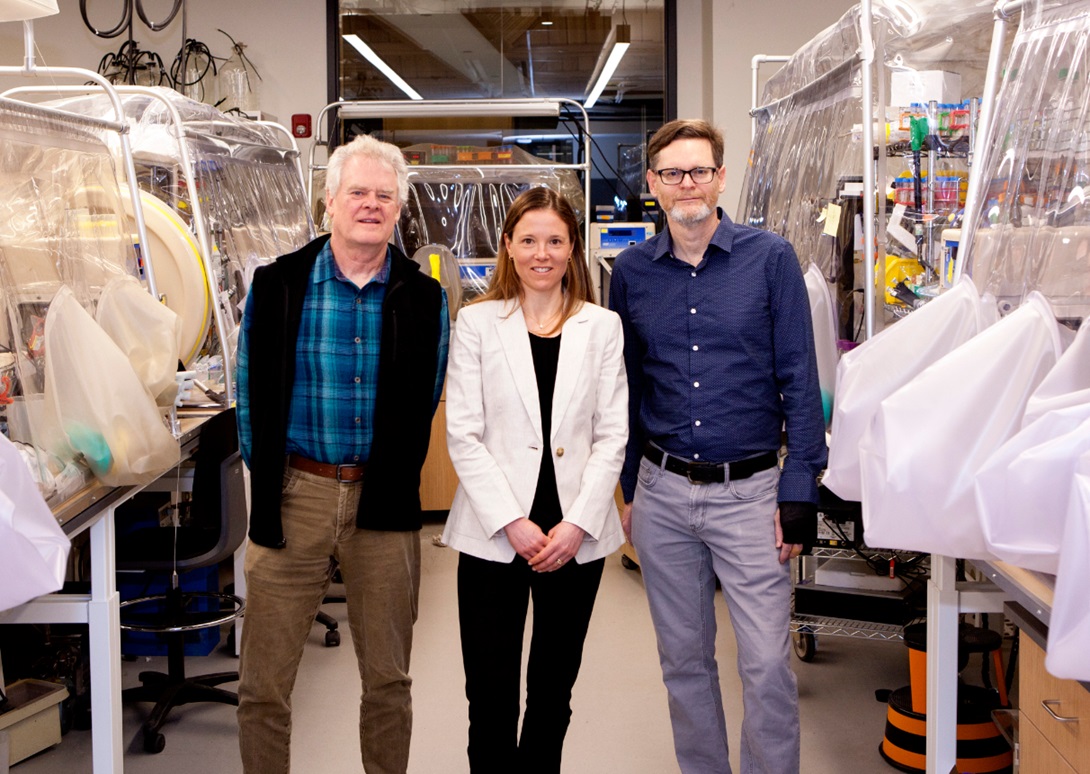Cleantech Startup Terragia Raises $6 Million to Advance Biofuel Production Tech – ESG Today
Cleantech Startup Terragia Raises $6 Million to Advance Biofuel Production Tech ESG Today


Cleantech Startup Terragia Biofuel Raises $6 Million in Seed Financing Round

Terragia Biofuel, a cleantech startup, has successfully raised $6 million in a seed financing round. The company intends to utilize the funds to expand its operations and commercialize its biology-based approach to converting biomass into ethanol and other sustainable products.
Introduction to Terragia Biofuel
Terragia Biofuel, founded in 2022 and based in New Hampshire, specializes in developing technology that enables the production of sustainable fuels from cellulosic biomass. The company’s innovative solution involves converting biomass into ethanol using thermophilic microorganisms. This process eliminates the need for enzymes and thermochemical pretreatment, which are major cost drivers in conventional cellulosic biofuel production. Terragia’s technology is particularly beneficial for difficult-to-electrify transport modes such as aviation, ocean shipping, and long-haul trucking.
New CEO Appointment
Terragia also announced the appointment of Kristin Brief as its new Chief Executive Officer. She joins co-founders Lee Lynd (now Chief Technology Officer), Bill Brady (Board Chair), and Chris Herring (Vice President of Technology Development).
Kristin Brief brings a wealth of experience to her new role, having previously served as a Business Fellow for Breakthrough Energy and as the Co-Founder and Chief Operating Officer of Virex Health.
“It’s an honor to lead Terragia as CEO. I’ve spent the majority of my 20-year career advancing early-stage clean energy startups, and Terragia’s technology, team, and path to commercialization are differentiated. We have a unique opportunity to make a transformational impact on climate outcomes, in addition to generating substantially higher revenues for biofuel producers.”
Investment and Partnerships
The seed financing round was led by Engine Ventures and Energy Impact Partners, indicating the confidence in Terragia’s potential for success in the cellulosic biofuel industry.
Terragia’s technology development is also supported by partnerships with Dartmouth College and the University of Campinas. Additionally, funding from the Department of Energy Center for Bioenergy Innovation, the São Paulo Research Foundation, and grants from the U.S. Department of Agriculture and National Science Foundation contribute to the advancement of Terragia’s technology. The company estimates that its technology has the potential to reduce 3 gigatons of CO2 emissions annually.
Recognition from Experts
Martin Keller, Director of the National Renewable Energy Laboratory, acknowledges the significance of cellulosic biofuels in achieving low-carbon fuels for aviation and other difficult-to-electrify transport modes, as well as CO2 removal from the atmosphere. He highlights the cost reduction potential of Terragia’s one-step biological conversion process without the need for added enzymes or thermochemical pretreatment.
“Cellulosic biofuels are a route to low-carbon fuels for aviation and other difficult-to-electrify transport modes as well as CO2 removal from the atmosphere, both of which are critical for climate stabilization. One-step biological conversion of cellulosic biomass without added enzymes or thermochemical pretreatment has clear cost reduction potential relative to other process concepts.”
SDGs, Targets, and Indicators
1. Which SDGs are addressed or connected to the issues highlighted in the article?
- SDG 7: Affordable and Clean Energy
- SDG 9: Industry, Innovation, and Infrastructure
- SDG 13: Climate Action
The article discusses Terragia Biofuel’s technology for converting biomass into ethanol and other sustainable fuels. This directly relates to SDG 7, which focuses on ensuring access to affordable, reliable, sustainable, and modern energy for all. It also connects to SDG 9, which aims to build resilient infrastructure, promote inclusive and sustainable industrialization, and foster innovation. Additionally, the article mentions the potential impact of Terragia’s technology on climate outcomes, aligning with SDG 13’s objective of taking urgent action to combat climate change and its impacts.
2. What specific targets under those SDGs can be identified based on the article’s content?
- SDG 7.2: Increase substantially the share of renewable energy in the global energy mix.
- SDG 9.4: Upgrade infrastructure and retrofit industries to make them sustainable.
- SDG 13.2: Integrate climate change measures into national policies, strategies, and planning.
The article highlights Terragia’s technology as a means to produce sustainable fuels from biomass. This aligns with SDG 7.2, which aims to increase the share of renewable energy in the global energy mix. Additionally, the company’s approach of using biology-based conversion instead of conventional methods contributes to SDG 9.4 by promoting sustainable industrial practices. Furthermore, the article mentions the potential impact of Terragia’s technology on climate outcomes, indicating progress towards SDG 13.2’s target of integrating climate change measures into national policies and planning.
3. Are there any indicators mentioned or implied in the article that can be used to measure progress towards the identified targets?
Yes, the article mentions the following indicators:
- Amount of biomass converted into ethanol and other sustainable fuels
- Reduction in CO2 emissions
The article states that Terragia’s technology is projected to displace 3 gigatons of CO2 emissions annually. This indicates a potential indicator for measuring progress towards SDG 13.2. Additionally, the article discusses the company’s approach of converting biomass into ethanol, implying an indicator related to the amount of biomass successfully converted into sustainable fuels, which aligns with SDG 7.2 and SDG 9.4.
SDGs, Targets, and Indicators Table
| SDGs | Targets | Indicators |
|---|---|---|
| SDG 7: Affordable and Clean Energy | Increase substantially the share of renewable energy in the global energy mix (Target 7.2) | Amount of biomass converted into ethanol and other sustainable fuels |
| SDG 9: Industry, Innovation, and Infrastructure | Upgrade infrastructure and retrofit industries to make them sustainable (Target 9.4) | Amount of biomass converted into ethanol and other sustainable fuels |
| SDG 13: Climate Action | Integrate climate change measures into national policies, strategies, and planning (Target 13.2) | Reduction in CO2 emissions |
Behold! This splendid article springs forth from the wellspring of knowledge, shaped by a wondrous proprietary AI technology that delved into a vast ocean of data, illuminating the path towards the Sustainable Development Goals. Remember that all rights are reserved by SDG Investors LLC, empowering us to champion progress together.
Source: esgtoday.com

Join us, as fellow seekers of change, on a transformative journey at https://sdgtalks.ai/welcome, where you can become a member and actively contribute to shaping a brighter future.







